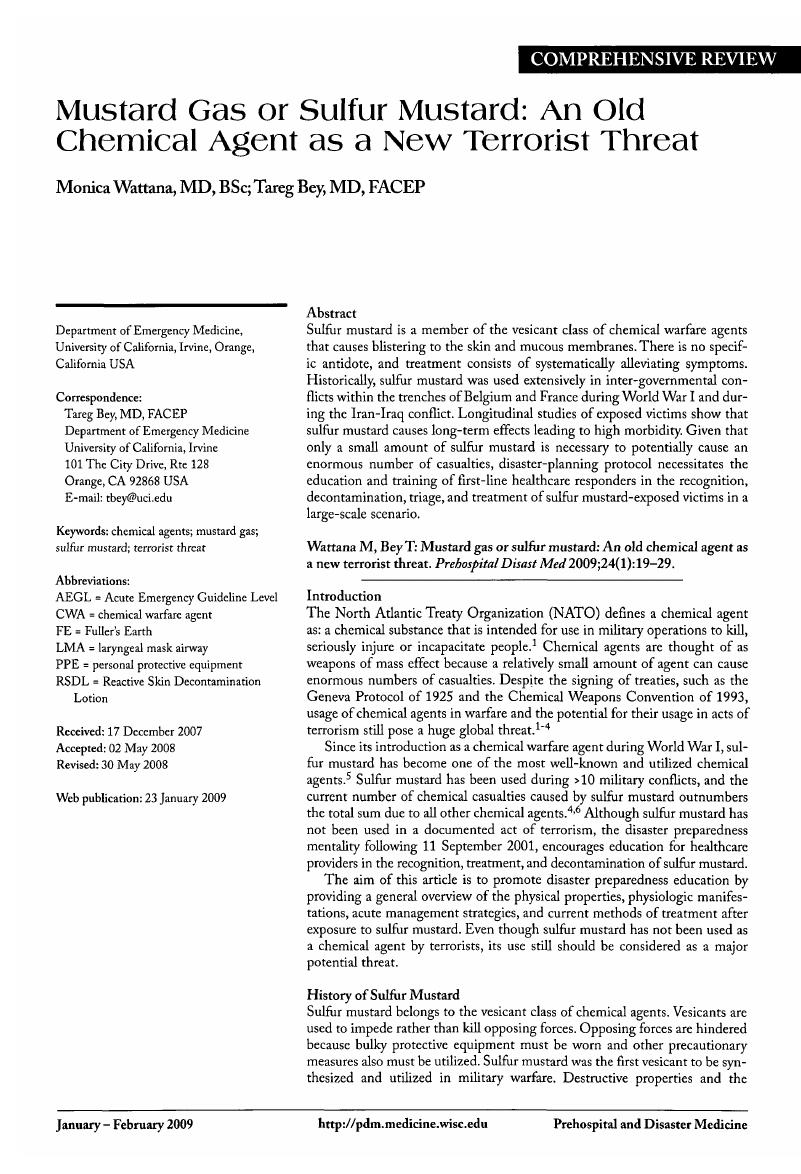No CrossRef data available.
Article contents
Editorial Comments: Mustard Gas or Sulfur Mustard: An Old Chemical Agent as a New Terrorist Threat
Published online by Cambridge University Press: 28 June 2012
Abstract

- Type
- Editorial Comments
- Information
- Copyright
- Copyright © World Association for Disaster and Emergency Medicine 2009


